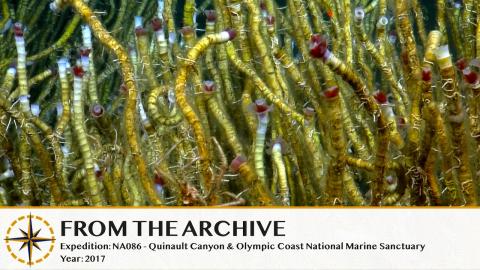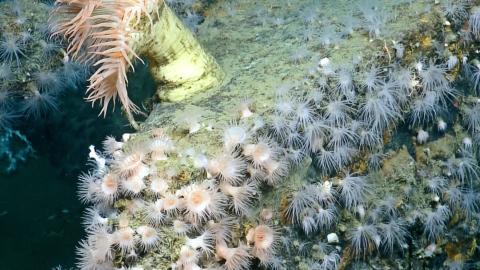Meet the Siphonophore
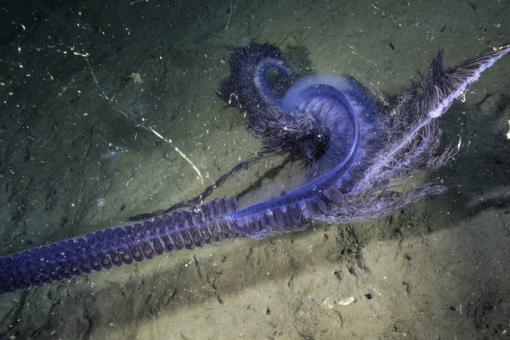
If you've hung out on YouTube or watched the news in the past week, you might have caught a glimpse of a familiar creature - the stunning siphonophore we found during ECOGIG went viral, making apperances on CNN, National Geographic, Hulu, and many local news stations. If you haven't seen the clip, you can check it out below:
So, what makes this species so awesome? To answer that question (and a few more), we went right to the expert. For all things siphonophore, that means Dr. Casey Dunn of Brown University.
1. How "rare" is the species of Siphonophore that we saw in the video?
Siphonophores are highly abundant in the open ocean. They are so fragile, though, that they are rarely found close to shore - the surf and sediment are too much for them.
This species, Erenna, is usually only found in deep water. So while it is rare to see it, because you need a submarine, it isn't particularly rare where it lives.
2. What makes siphonophores unique among other ocean organisms?
There are many things that make siphonophores unique - they are extraordinary organisms. The reason I got interested in them is that, like corals, they are colonial animals. Humans are born with one small body, and different parts of that body are functionally specialized for different tasks. To grow, we make our one body larger.
Siphonophores take a very different developmental and evolutionary approach to becoming large, complex organisms. They also start with one body, but they grow by asexually producing many more small bodies that all remain attached. And each body is functionally specialized for particular tasks, such as feeding or reproduction. The complexity of how these bodies are specialized and organized in the colony far exceeds that of any other colonial animal.
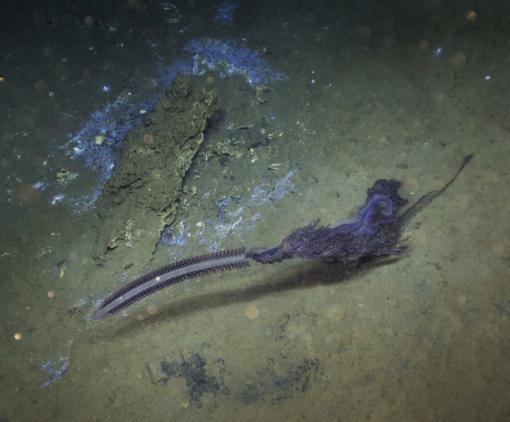
3. How are different species of siphonophore have been described?
There are about 175 described species. Most are quite fragile, and in many cases only the structure of the dissociated pieces have been described. Mostly they are distinguished be the structure of the swimming bodies and tentacles.
4. How do siphonophores move around in the ocean?
Most siphonophores are active swimmers. The Portuguese Man of War, Physalia, has a sail and is blown by the wind. This specimen is swimming, but it is also being carried by a gently current that is sweeping it along the bottom.
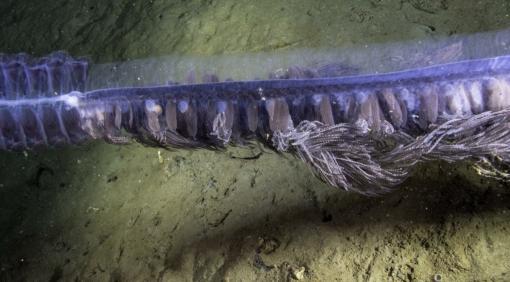
5. What would the purpose of the feather-like plumage be?
Those are the tentacles. All siphonophores have tentacles that they use to trap prey. Different species eat different animals, and their tentacles vary in how the stinging cells are arranged.
The E/V Nautilus team had the pleasure of spotting yet another siphonophore, also an Erenna, on one of our last divs of the season on a mud volcano near Trinidad.
Learn More:
If you'd like to know more about siphonophores, you can check out two websites maintained by Dr. Dunn's lab, http://siphonophores.org and http://creaturecast.org/, or follow him on Twitter @caseydunn.
Related Links:
National Geographic News: What's that Weird Purple Sea Creature?

Exploring Unknown America
This expedition focused on documenting the myriad natural and cultural resources that lie in U.S. waters for the joint National Geographic and 60 minutes television special, The Unknown America.
